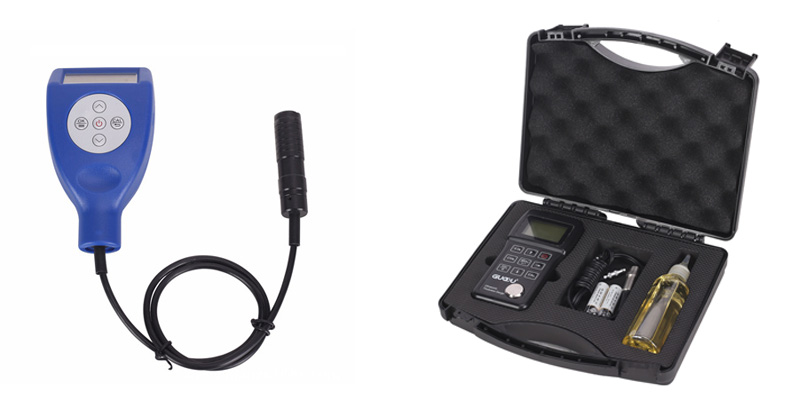Atmospheric pressure storage tanks are widely used in oil refining and chemical enterprises to store crude oil, refined oil, intermediate raw materials and chemical products and other media. Risk assessment and inspection of atmospheric storage tanks are of great significance to the safe and long-term operation of atmospheric storage tanks. Today, Guoou Instrument will talk about how to measure various types of atmospheric storage tanks with coating thickness gauges. Before we talk, let's understand the classification of atmospheric storage tanks.

1. Classification of atmospheric storage tanks
According to the geometry, storage tanks can be divided into vertical cylindrical storage tanks, horizontal cylindrical storage tanks and spherical storage tanks;
According to the installation location, storage tanks can be divided into above-ground storage tanks, semi-ground storage tanks and underground storage tanks;
According to the tank material, storage tanks can be divided into metal storage tanks and non-metallic storage tanks;
According to the design pressure, storage tanks can be divided into atmospheric storage tanks, low pressure storage tanks and pressure storage tanks. Storage tanks with design pressure less than or equal to 6.9kPa (gauge pressure at the top of the tank) are atmospheric storage tanks; storage tanks with design pressure greater than 6.9kPa and less than 0.1MPa (gauge pressure at the top of the tank) are low-pressure storage tanks; design pressure is greater than or equal to 0.1 The storage tank with MPa (tank top gauge pressure) is a pressure storage tank.
According to the structure of the tank roof, atmospheric storage tanks can be divided into fixed roof tanks, internal floating roof tanks and external floating roof tanks. Fixed-roof tanks are further divided into self-supporting vault tanks and self-supporting cone-roof tanks.
2. Composition of atmospheric pressure storage tank
The atmospheric storage tank is mainly composed of tank body, tank foundation, heater, floating plate and safety accessories.
The tank body mainly includes the tank bottom plate, the tank wall plate and the tank top plate. When the inner diameter of the storage tank is less than 12.5m, the bottom of the tank may not be provided with an annular edge plate; when the inner diameter of the storage tank is greater than or equal to 12.5m, the bottom of the tank should be provided with an annular edge plate.
The tank foundation not only supports the tank body, but also can reduce the soil corrosion of the tank bottom, which plays an important role in the safe operation of the atmospheric storage tank. The tank foundation form can be divided into plain soil slope protection foundation, gravel ring wall slope protection foundation, ring wall foundation, outer ring wall foundation and pile foundation. When the tank foundation has anti-leakage requirements, an anti-seepage layer should be set up. The anti-leakage material should be geotechnical materials, and the anti-seepage layer should be set between the sand cushion layer and the packing layer. When the design requires the medium in the storage tank to be constant temperature or the temperature of the medium is greater than 90°C, the bottom of the tank should be insulated with a protective layer.
3. Detection method
1. Commonly used inspection methods
Tank opening inspection: After the production is stopped and the tank is cleaned, the tank enters the tank, and the internal and external inspection of the storage tank generally requires a comprehensive bottom plate; scanning inspection (such as MFL, electromagnetic, eddy current), welding surface inspection, tank body inspection 3D scan (deformation);
Online inspection: In the case of not stopping, the inspection of the inside and outside of the storage tank is generally carried out on the bottom of the tank, and the acoustic emission test of the bottom plate is generally performed, supplemented by high-frequency guided wave detection;
Risk-based inspection: Through risk assessment, risk ranking and damage mechanism identification are carried out for storage tank groups, and inspection strategies are determined and implemented according to the level of risk and damage mechanism.
The inspection of the tank includes not only the inspection and testing of the tank bottom plate, tank wall plate and tank top plate, but also the inspection of the anti-corrosion coating and thermal insulation inside and outside the tank.





